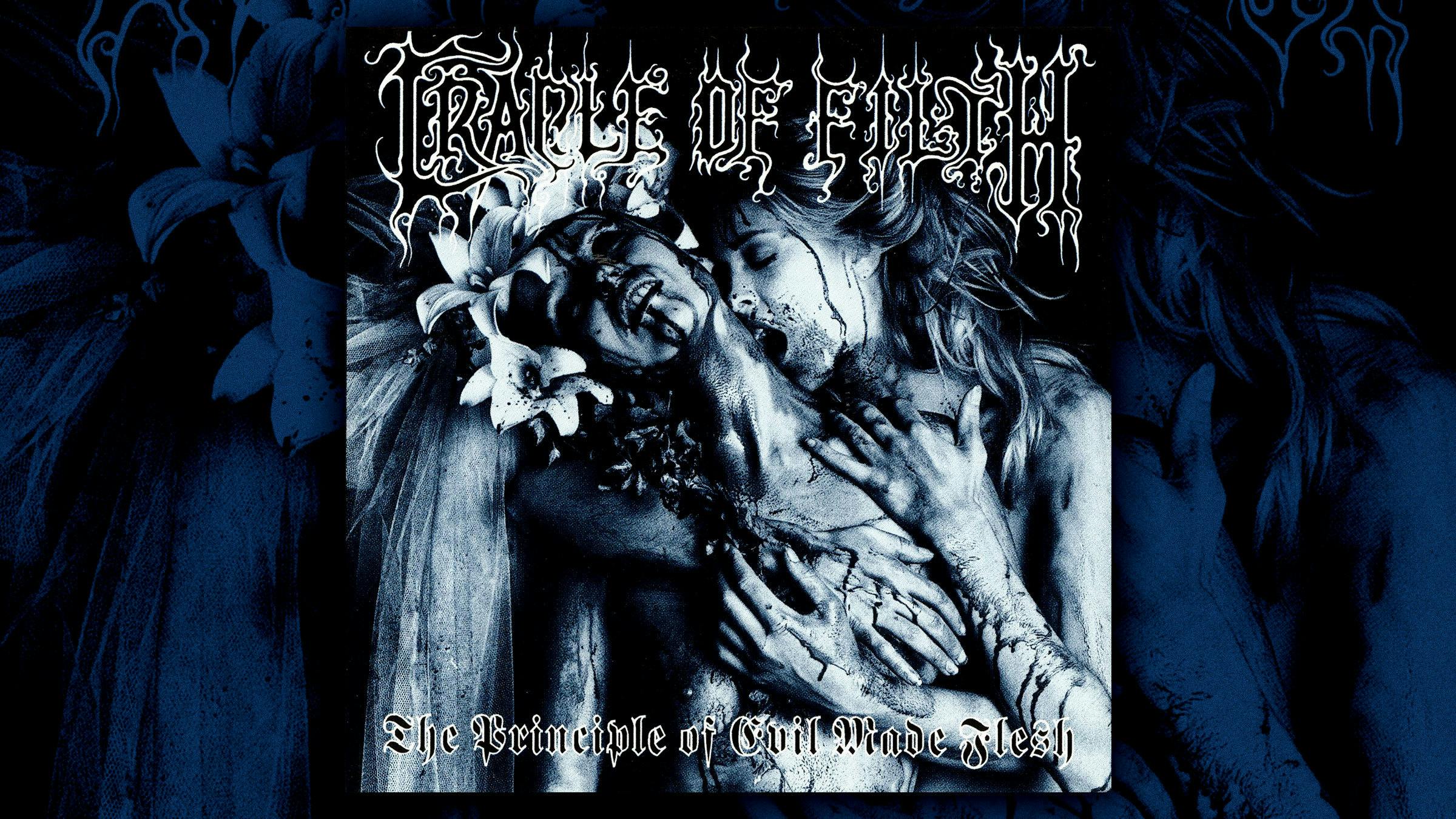The Principle Of Evil Made Flesh brought a hard-hitting sense of old-school song structure to black metal. While many second-wave black metal bands were known for their lumbering riffs and sprawling experimentation, Cradle Of Filth’s music was all about momentum. The guitar grind and drum gallop on songs like The Black Goddess Rises and Summer Dying Fast were more akin to thrash and death metal than the airy, misanthropic tracks made by the band’s Scandinavian counterparts. Dani Filth’s vocals are also significantly more monstrous and accessible than the grunts and wails that came before them. The album didn't sound as though it was made by unreachable heathens immersed in a Christian hell, it sounded like it was made metal fans who loved vampires.
That, though, might be Principle Of Evil’s more important contribution to black metal: gothic horror. While Cradle certainly weren’t the first black metal band to sing about crumbling parapets full of shadowy undead, they were the ones to do so with guiltless abandon and nerdy passion, focusing more on the satanic rites of Dracula than the real-life political bloodshed of Vlad Tepes. The cover of Principle alone, with its sapphic baptism of blood echoing Sheridan le Fanu’s classic vampire story Carmilla, adds a romantic sexuality to black metal’s bloodlust that other bands wanted to be as divorced from as possible.
Born out of this was the game-changing use of synths on Principle, which lean hard on the harpsichord and organ settings. These intros and interludes paint a vivid sonic landscape that your average fan of goth and metal could escape into, full of moonlit woods and looming castles venting clouds of bats. As such, listeners who might’ve been put off by all the humourless satanism and Tolkien worship of early second-wave black metal could revel in the delicious darkness of the genre, relating to familiar horrors like Nosferatu rather than the pagan fears of alienated teenagers (not that Cradle's vampiric horror isn't sophomoric – we are talking about the creators of the infamous 'Jesus Is A C**t' shirt – only that the band seemed very aware of that sensational side of their act).
